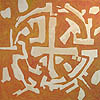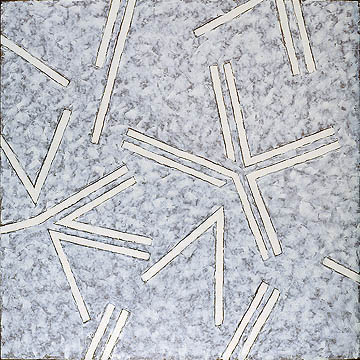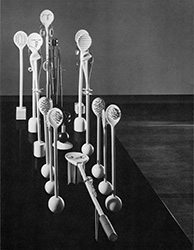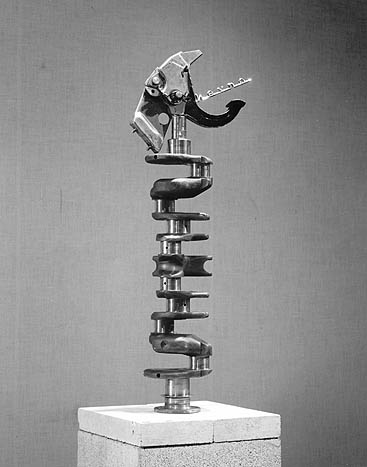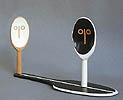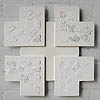Before 1964

before 58 |

1958 |
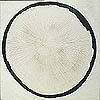
1960 |
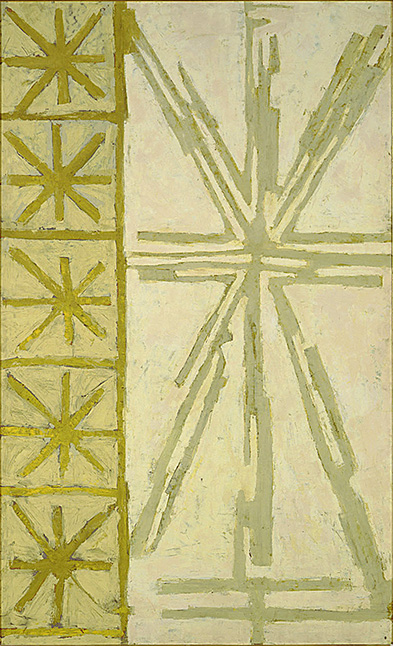
1961 |

1961 |
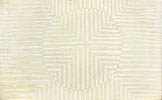
1962 |
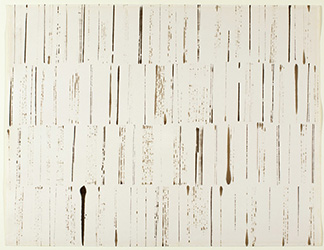
drawings |
Early Days and Regina
Bloore said he painted his first fully non-representational work in the summer of 1958. He had just accepted a teaching position in Regina and he took the new work with him. He had always dreamed of someday becoming an artist and now, suddenly he had. “It was like bursting through the sound barrier,” he said. “Complete freedom. I knew I could paint that way - non-representationally - from that point on.”

Sign, July 1961, 48x48", 122x122 cm, Oil on masonite, Private Collection, 610200744
Ron, after a childhood of difficulty and discouragement and a youth of difficulty and encouragement, Bloore felt ready to cause a little difficulty of his own. He was like a missionary in the frontier bringing what had rescued him to those who had not yet seen the light.
What followed were four years of extremely fruitful searching for a distinctive approach to painting non-representationally. He experimented with different types of paint and various methods of applying them. This resulted in a great diversity of surface textures and these sculptural features had major ramifications. Bloore produced many successful paintings in a number of successful styles, some of them flat and painterly, others with more relief.
1964-74

1964 |
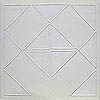
1965 |
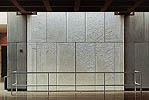
1967 |

1969 |
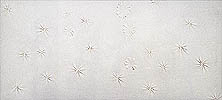
1973 |
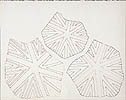
drawings |
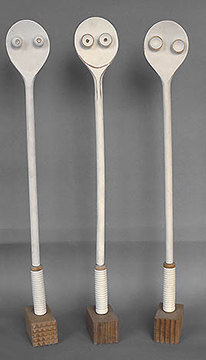
sploores |
White on White
In 1962 Bloore went on a year-long sabbatical to Greece, Turkey and Egypt. It was an inspiring and productive time, but after seeing Egypt he destroyed everything he had done while there and upon his return to Regina summarily destroyed almost every painting he had done before his trip that he could get his hands on. Those that survived this grand elimination, were those which he now recognized were leading forward. He could continue to paint non-representationally. He now knew exactly what he would paint non-representationally.
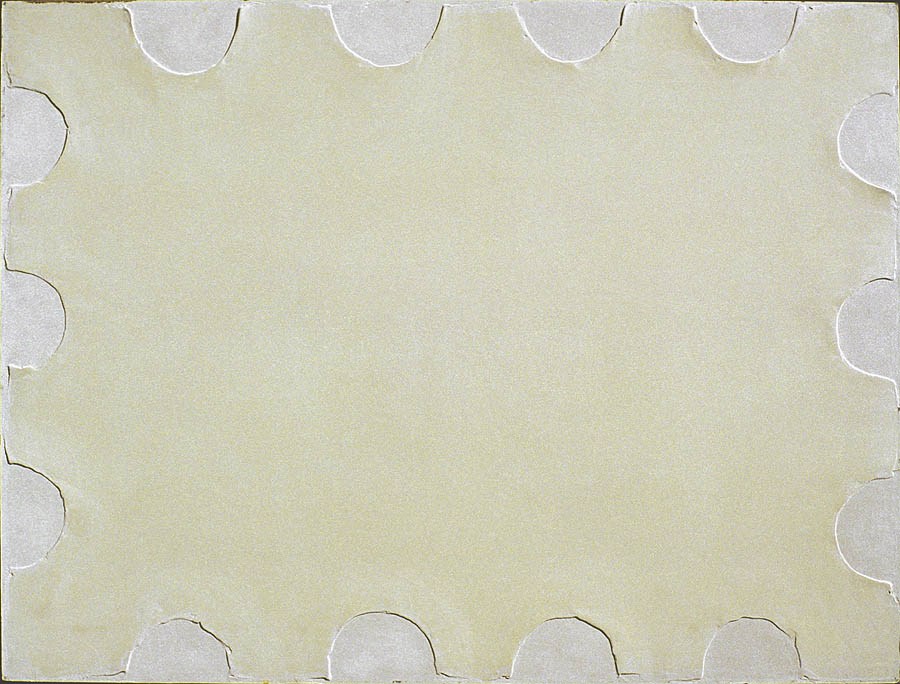
1968, 36 x 48", 91 x 122 cm, Oil on masonite
In 1966 Bloore gave up being a gallery director in Regina and returned to Toronto to teach Art History at York University.
1975-87
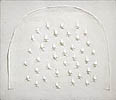
1976 |
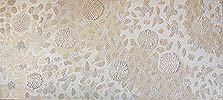
1982 |
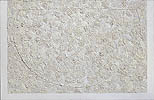
1982 |

1983 |

1986 |

inkworks |
Teaching and Talking in Toronto
Two particular effects divide Bloore's paintings into two particular types. They appear throughout most of his career but a shift can be seen from one of these being predominant in 1970 to the other taking completely over by 1979. The major paintings of the early seventies have a field that reads as a surface which supports the built up forms of the composition. By 1979 that field has transformed into a space of vast depth behind three dimensional shapes which seem to possess freedom of movement.
From 1981 to '86 breaking the surface, breaking the rectangle and breaking into three dimensions led Bloore to monumental constructions. From '80 to '86 his spectacular works on paper went into entirely new directions with figure/ground/space relationships. And all this culminated in 1989 - '91 with a run of over thirty very large, very dramatic new works.

1979, 36 x 48", 91 x 122 cm, Oil on masonite
1987-99
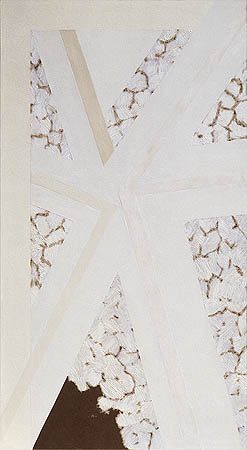
1988 |
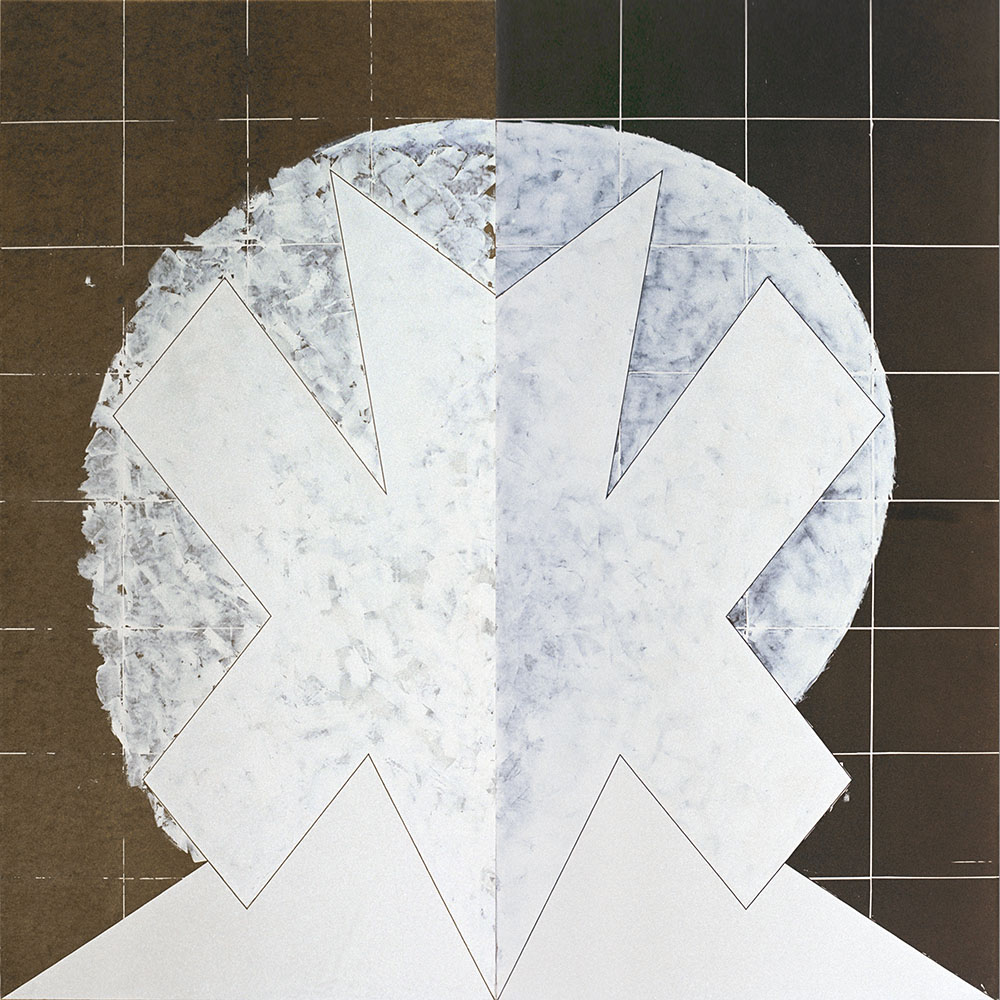
1989 |
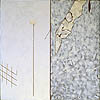
1992 |
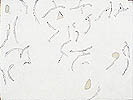
1998 |
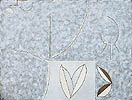
1998 |

1999 |
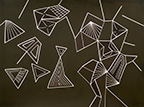
inkworks |
Synthesis
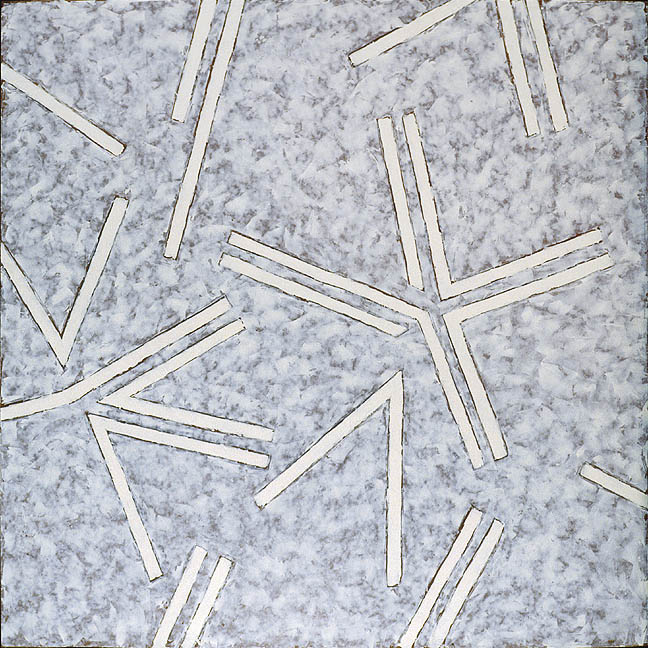
1991 No.1 (910010716), 48x48", 122x122 cm, oil on masonite, corporate collection
2000-07

2002 |

2003 |

2004 |
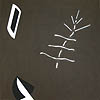
2005 |
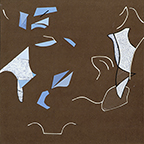
2006 |
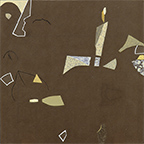
2006 |
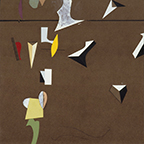
2007 |

2007 |
Anti-synthesis
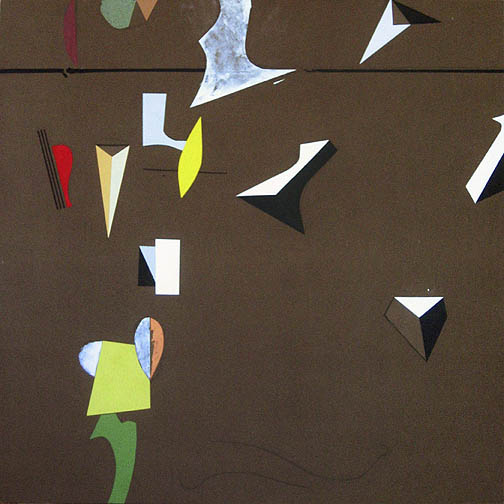
2007 No.3 (207630328), 48x48" 122x122 cm, oil on masonite, Mackenzie Art Gallery
Drawings

1960 |
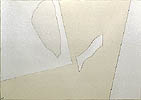
1979 |
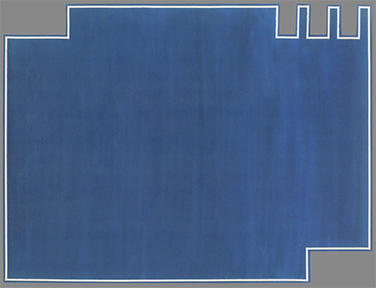
1981 |

1982 |
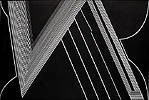
1983 |

1986 |

1994 |
Pen and Ink Drawings, Oil Paintings on Paper
and Brushed Ink Works
Rather than simply paint with brushes on canvas in the conventional manner, Bloore chose two supports from older traditions. He worked on paper one way and on panel in very different way. He never made prints (though he did do a few editions of bronze and silver and gold Sploores and once designed a tapestry.)
Working on paper was always, naturally, much more improvisational than panel painting. Drawings were approached with complete seriousness of intent but without preconceived design: the imagery would be developed on the fly. New techniques were tried with the utmost of care and attention but with maximum speed. Speed was the key to bringing out surprises, while focussing on technique could help prevent gesture. Gesture was never permitted because it would imply expression.
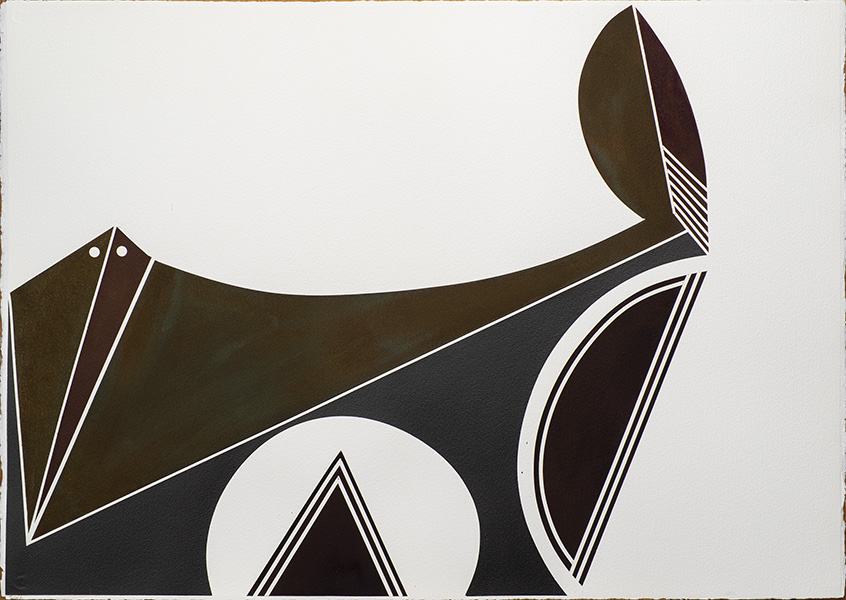
1985 June 7th (851090607) 29x41" 78x105cm, ink on paper
Works on Paper, undertaken as, and finished as artworks in their own right are given series pages just like the painting are. The first four of the five Major Period pages have sections introducing the drawings of that time. The Works On Paper Mode page provides an overview of them all.
Sketches and unstructured explorations on paper are presented among the Miscellaneous pages. Also, there is an article there about Painted Working Drawings and one about regular Working Drawings, the sketches done as designs for paintings. Images of working drawings, when we have them, will be included in the Catalog entries of the artworks they relate to.
Sculpture
Sploores etc
Bloore went sculptural three separate times three different ways. On one occasion in 1960, he and a couple colleagues made a few casual found object assemblages which for a lark Bloore gave a full exhibition in the MacKenzie Gallery, attributing the works to a fictitious sculptress, Win Hedore. A second time, in 1970, he began idly fiddling with some wooden spoons he had picked up during his travels. This quickly evolved into a surprising sculptural series called Sploores completely unconnected to his work as a painter. The third time Bloore went into the third dimension was for the Monumental Series in the 1980's and this time it was simply a development of his current manner of painting. He experimented with overlapping multiple panels within a single composition which stacked forward off the wall.
Bloore did do some multiples of bronze and silver and gold Sploores and even once an edition of tapestries. The thumbnail in the centre above shows a pendant.
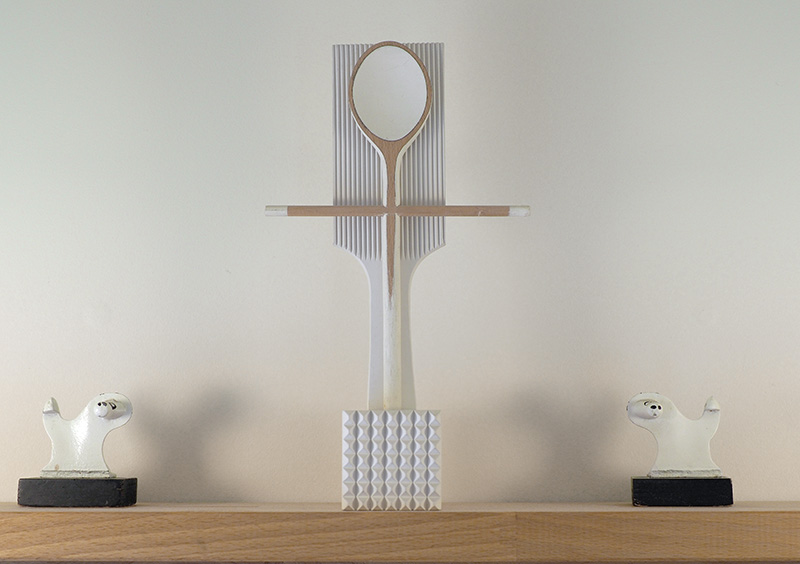
1971, painted hardwood, 29 x 16 x 8cm, Private collection Toronto
Above: a classic Sploore flanked by a couple of improvised doggies made from window blind mounts.
THE WORKS
In 5 Periods and 2 Modes








